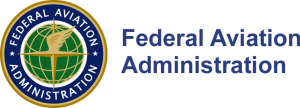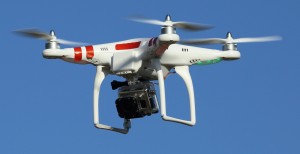FAA Regulations on Drones Recently Passed
Commercial Drone Operations
New FAA Regulations on Drones
The FAA, which is working to regulate commercial drone or UAS activities within controlled airspace, recently made two big announcements regarding new FAA regulations on drones. The first is that there will be streamlined UAS COAs for Section 333 exemption holders (http://www.faa.gov/news/updates/?newsId=82245). What that means is that the once unnecessarily tedious process of applying for a Certificates of Waiver or Authorization (COA) in order to fly a drone for basically any commercial activity has been made much simpler. Prior to this announcement commercial drone operators had to submit an application to the FAA for almost each and every commercial flight and then wait up to 60 days for a formal response from the FAA. The new streamlined COAs allow for blanked UAS and commercial drone operations under certain criteria including day flight, flying line of sight, not within specific distance of airports, to name a few. This now allows for regular commercial drone operations without the long process of submitting a COA.
and every commercial flight and then wait up to 60 days for a formal response from the FAA. The new streamlined COAs allow for blanked UAS and commercial drone operations under certain criteria including day flight, flying line of sight, not within specific distance of airports, to name a few. This now allows for regular commercial drone operations without the long process of submitting a COA.
The second announcement of FAA regulations on drones is that the FAA is starting to use a summary grant process in granting Section 333 exemptions to commercial drone operators (http://www.faa.gov/news/updates/?newsId=82485). Prior to this announcement the FAA would not only review each individual application for exemption, they would also develop an individual summary for exemption for each exemption request. This led to extreme wait times in many cases for businesses working to have their exemption processed. Now under the new procedure, the FAA is still reviewing each individual exemption request but the FAA is now batching together similar exemption requests in one single summary. For those of you wondering what Section 333 even is and why an exemption is necessary, it is the federal regulation being used to govern commercial drone operations within the United States.
Understanding FAA Regulation Updates
Now, the good and the bad of the recent FAA regulation on drones announcements: the good is that it will be easier for those looking to fly drones commercially and the bad is that it will be easier for those looking to fly drones commercially. Don’t worry, I’m not crazy, I know that I said the good and the bad are the same. Allowing responsible pilots to take to the air and take advantage of drone technologies in a simple, regulated, and controlled environment is a great step forward. The concern though is that as restrictions and barriers are removed more and more people will be taking to the sky with drones.  As a commercial helicopter pilot many of my flights are low to the ground and operating in airspace where drones are likely to be flying. Although a 3 pound drone might not seem to dangerous falling on your head (it will still likely cause a concussion), when it hits an aircraft that is flying over 100 mph it will absolutely destroy a canopy, stall an engine, damage flight controls, and likely cause the death of the pilot.
As a commercial helicopter pilot many of my flights are low to the ground and operating in airspace where drones are likely to be flying. Although a 3 pound drone might not seem to dangerous falling on your head (it will still likely cause a concussion), when it hits an aircraft that is flying over 100 mph it will absolutely destroy a canopy, stall an engine, damage flight controls, and likely cause the death of the pilot.
Conclusion
As the government continues to work and pass new FAA regulations on drones, simplifying the process to fly drones commercially, it is this pilot’s hope that they will always consider primarily the safety of the pilots in the air and ensure the drone pilots on the ground are educated sufficiently to operate in the skies.
